Managing heat stress – Part 2 – Adequate housing optimises performance
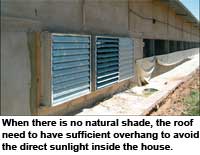
Many obstacles need to be overcome when managing intensive poultry production, such as heat stress. This limits the realisation of the genetic potential of the birds. Chickens can adapt to high temperatures to some extent; however, when temperatures exceed 41°C, drastic measures will need to be taken in order to avoid mortality due to heat stroke.
By Viola Holik, Lohmann Tierzucht, Dar es Salaam, Tanzania
Strains of laying hens that are superior in moderate climates have no problem adapting to open houses with high temperatures (Figure 1). In correctly constructed houses it can be easy to obtain sufficient air movement to be able to cool the air down to the desired level. Open houses usually rely on natural ventilation where the air can easily flow in and out of the house. Here, high roofs help to remove the hot air from the birds.
Naturally ventilated houses
Naturally ventilated houses should face east-west to avoid direct sunlight, thereby minimising the heat in the afternoons. Direct sunlight will increase the temperature the birds feel. In response the birds will try to move away from direct sunlight to a shady part of the house, where the consequently higher stocking density will also contribute to heat stress.
Natural ventilation is most effective in houses of maximum 12 m wide. The faster the air flows, the more effective the cooling will be. So therefore, for example, airflow of 0.1 m/sec has no cooling effect, whereas airflow of 1.25 m/sec has a cooling effect of 3.4°C.
Roof – The roof, which should have open ridges (1 m) to allow hot air to escape from inside the house, should be insulated to minimise heat absorption. Inexpensive locally available insulation materials such as palm leaves, reeds or corn stalks can be used, but these may attract wild birds, rodents etc.
Instead of good insulation materials such as sprayed polyurethane or polystyrene board, which may be relatively expensive or unavailable, one can use simple solutions such as white wash to decrease heat uptake on the roof. Good mixtures are 10 kg of hydrated lime + 20l of water, or 10 kg hydrated lime + 10 kg of white cement + 25l of water.
It is advisable that the roof has an overhang. Properly designed overhangs help to reduce direct and indirect sunlight in the house. The taller the side wall and the closer the side wall opening is to the ground, the longer the roof overhang should be. A minimum overhang of 0.6 m is recommended; taller houses and larger curtain openings will benefit from roof overhanging 1.25 m and more.
Surroundings – The surroundings of the house also have an important effect on the inside temperature of the house. A green lawn around the building kept short and watered will help to reduce reflection of sunshine. Wet grass will also have a cooling effect through evaporation. Small trees can be planted around the house for shade, but they should not disturb the air movement. The temperature difference between shade and sun can be up to 15°C! All obstacles that hinder air flow should be removed, even cobwebs on the fence.
Fans – Additional equipment can be installed that will help to control the house temperature. If natural airflow is not sufficient, fans should be used. Slow speed, large industrial fans are recommended, installed 1 m above the ground to blow air horizontally over the birds. It is advantageous to operate the fans during the night as well to assist birds’ recovery from heat stress during the day. The maximum ventilation rate recommended dictates the size and number of fans. As a rule of thumb, use 1 x 620 mm 900 rpm fan per 1,000 laying hens.
Foggers – Foggers help decrease house temperature. The effect the foggers have will depend on the number of nozzles installed. In open, naturally ventilated houses the rule of thumb is to have a minimum of 0.35 l/h fogging nozzle capacity for every square meter of floor space. Fogging should not begin below 28°C and not if the humidity exceeds 80%. Small cycle fogging is better than long cycles (8 sec / 15 sec at 40% RH) (8 sec / 22 sec at 70% RH).
Gunny – The so-called “Gunny” is like a small sister of the cooling pad system. Simply, it is a cloth soaked in water (through a hose pipe) covering a part of the fence. This simple device can reduce the surrounding temperature by up to 3°C due to evaporation.
Birds kept in open houses can still have outstanding results despite high temperatures, as shown in the example from South America where temperatures averaged 30°C (Figure 1). These 14,300 LSL layers had only 7% mortality at 75 weeks of age and produced 355 eggs per hen housed – 15 eggs more than the current standard.
Environment-controlled houses
An alternative to open houses are closed, environment-controlled houses. These are more expensive in terms of construction and maintenance, but are more effective in controlling temperature. More predictable, consistently high production and reduced mortality should cover the added cost.
Power ventilated houses can have positive or negative pressure systems. The type mostly used in hot climates is the negative pressure system where the air is extracted from the building with fans and enters through small inlets. Two different negative pressure systems can be used: (i) the tunnel ventilation system in which the air enters the house at one end of the building and big exhaust fans are located at the other end, and (ii) the inlet ventilation system with which several air inlets and fans are distributed throughout the entire building. The tunnel ventilation system is considered more effective in heat management due to a higher rate of air exchange and faster air movement, which cools the birds more efficiently.
Controlling airflow
New houses need to be constructed and insulated properly if the producer wants to maximise profits. Open houses may be transformed into power ventilated houses by closing the side walls with curtains. This requires minimal investment. In case of power failures or technical problems, it must be possible to open the curtains to switch back to natural ventilation. It is important to note that curtains do not insulate well and may sabotage the effects of the power ventilation. The roof and walls must be well insulated.
Airflow has to be sufficient to keep the birds cool. A critical figure is the temperature of the air leaving the house. Transporting the excess heat from the birds, the building and the motors, the outgoing air should not be more than 2.8°C hotter than the temperature outside the house. The following formula can be used to calculate the required airflow in a power-ventilated house:
Air flow rate = Cross-sectional area of the house x required speed desired.
Inlets – A minimum of 1 m² inlet area per 14.000 m³/h exhaust fan capacity is recommended. The inlet systems can be differentiated in 3 systems: (i) Cross ventilation (fans on one side of the house and inlets on the other side; works best in houses less than 10 m wide); (ii) Side-wall ventilation (fans and inlets on side-walls); (iii) Attic inlet ventilation (fans are distributed at the side-walls, inlets are in the roof).
Tunnel ventilation – Tunnel ventilation does not only depend on the correct air exchange rate, but also on air speed. For layers an air speed of 2.5 – 3 m/sec is recommended. The fans can be located either at the end of the building or on the side walls at the end.
Evaporation cooling
The principle of evaporative cooling is based on the fact that humid air contains more thermal energy than air of the same temperature, but lower humidity. By spraying water or passing incoming air through cool cells (wet pad), humidity is increased and air temperature decreased. The cooling effect by evaporation will be best if the humidity of the initial air is low (Table 1). This system is therefore widely used in desert areas. Normally a house with tunnel ventilation is used and the walls opposite the fans are equipped with the cooling pads. These must be in proportion to the fans installed.
Birds placed in environment-controlled houses can achieve outstanding results. Figure 2 shows the rate of production of a LB parent flock in Egypt in a closed ‘brown-out’ house with a dimension of 30 x 100 m with full litter and cooling pads with exhaust fans. The house is equipped with metal nests for manual egg collection. This parent flock peaked at 94%, produced at a rate above 90% for more than 13 weeks and had cumulative mortality of 6.5% to 62 weeks of age.
These results show that investments made to control the environment temperature can pay off in terms of higher and more predictable egg output. If capital is available for investment in controlled housing, the expected return on investment should be calculated from the difference between outside and inside temperature, humidity of outside air and the expected income from additional eggs produced.
 Beheer
Beheer

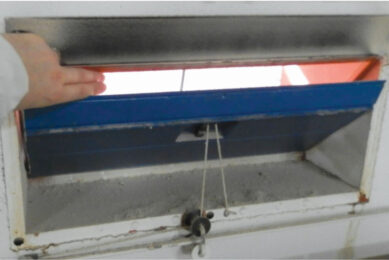
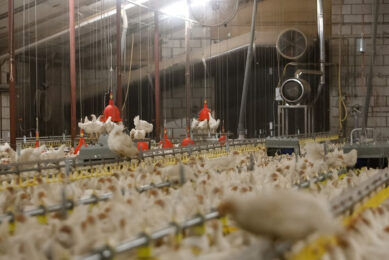
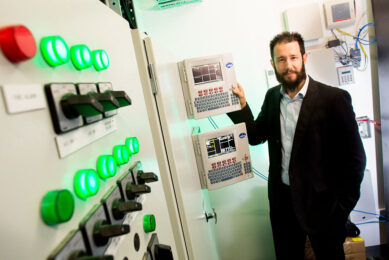
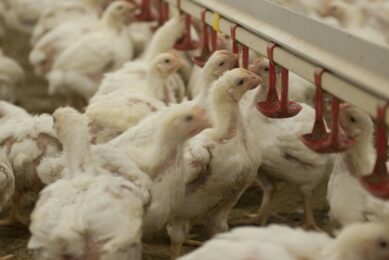



 WP Admin
WP Admin  Bewerk bericht
Bewerk bericht